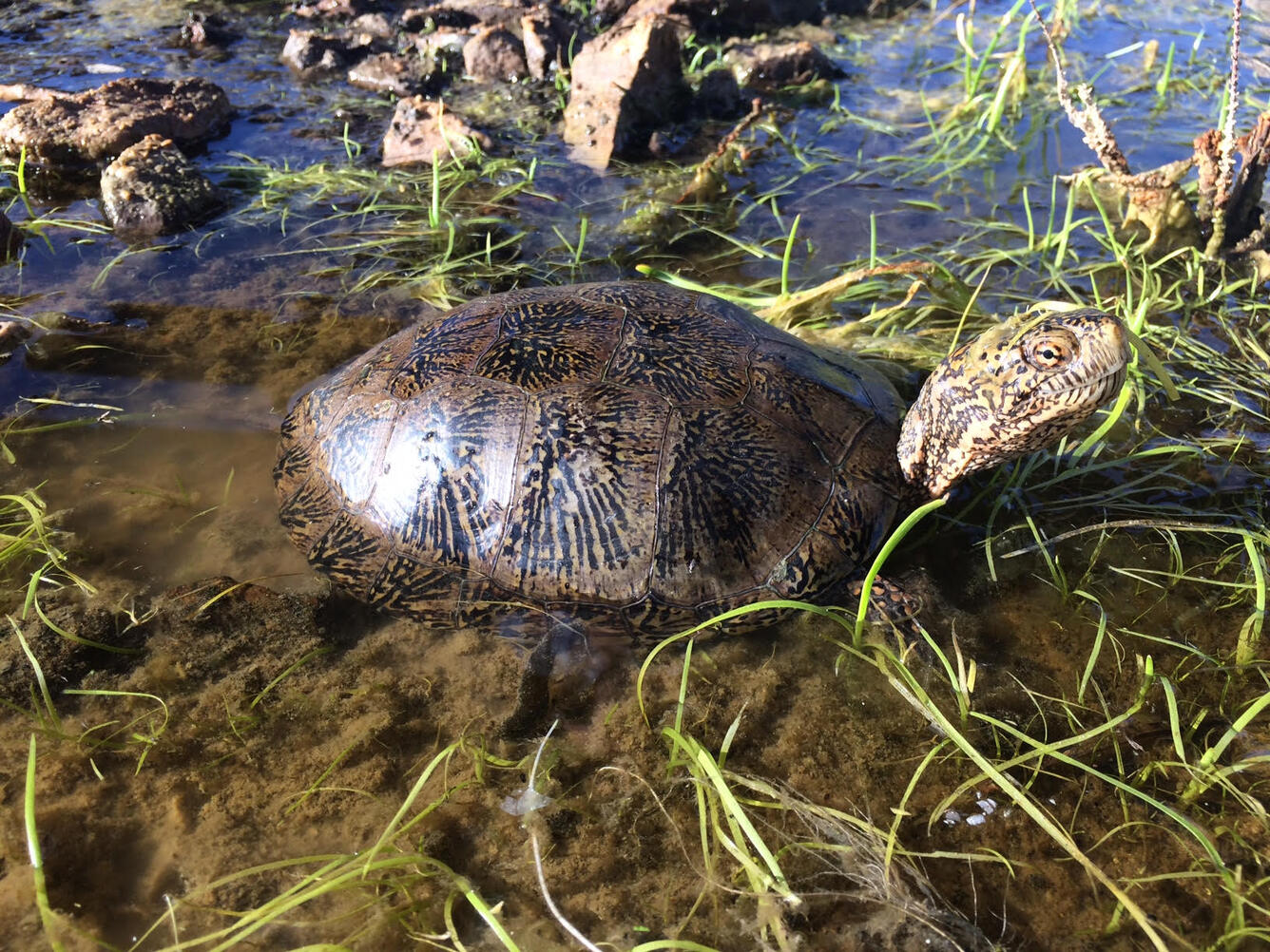USGS Scientist Wins Prestigious Global Turtle Conservation Award
After over 40 years conducting research across the globe and in the deserts of the Southwest, noted turtle and tortoise ecologist Dr. Jeff Lovich has been awarded the highest honor in his field: the prestigious international Behler Turtle Conservation Award. This honor is considered the “Nobel Prize” of turtle conservation.
The Behler Turtle Conservation Award is a major annual international award that honors excellence and leadership in the field of tortoise and freshwater turtle conservation and biology.
Dr. Jeff Lovich has been publishing on the ecology and taxonomy of turtles and other wildlife for 40 years.
He has produced over 200 scientific publications and five books. Along the way, he described and named 4 turtle taxa, including 3 in the U.S. and one in Japan. Most of his research is in the Mojave and Sonoran Deserts. He is a Fulbright Scholar and an elected Fellow of the Linnean Society of London, the world’s oldest active biological society. Dr. Lovich is also one of the editors of the international scientific journal Chelonian Conservation and Biology, that publishes turtle research papers. His research focuses on all aspects of turtle ecology, and the impacts of utility-scale wind and solar energy development on wildlife, especially desert tortoises.
Dr. Lovich's travels have taken him to the Galápagos, Japan, Morocco, and throughout the USA. On a Fulbright Scholarship to Morocco, he checked off a bucket list item when he found and studied striped-necked terrapins in the Sahara Desert that have beautiful sky-blue eyes and survive in small wetlands like oases and streams among the vast sand dunes.
In the U.S., Dr. Lovich has spent over 30 years researching Agassiz’s desert tortoises, long-lived denizens of the Desert Southwest. Much of what we know about desert tortoise behaviors, habitats, reproduction, and strategies for survival — especially their response to wind and solar energy development and its effects on the landscape — is due to Dr. Lovich's long-term studies.
Dr. Lovich has also studied the ecology of western pond turtles in the Mojave Desert. Western pond turtles are primarily coastal species and only two populations remain in the Mojave Desert: one in the Mojave River and another in a wetland at Edwards Air Force Base in the west Mojave. The species was more widely distributed in the Mojave during the wetter Pleistocene epoch, and Dr. Lovich has found their fossils near southern Death Valley. As conditions became warmer and drier about 10,000 years ago, the range of the two recognized species of pond turtles contracted to coastal drainages from Baja California in Mexico to Washington State. Mojave Desert populations of pond turtles are tenuous, and may become more threatened as warming temperatures and drought shrink their remaining habitat.
Turtles perform valuable ecosystem functions. For instance, desert and gopher tortoises are prodigious burrowers. Their burrows provide shelters from environmental extremes for themselves and species that cannot dig their own burrows, such as various species of birds, frogs and snakes, some of which are endangered. Several types of turtles are also important dispersers and germination enhancers of seeds. Certain seeds need to have their coats softened by passing through the digestive system of animals before they can germinate. The collapse of turtle populations on a global scale has greatly diminished their ecological roles.
Dr. Lovich was born to study these amazing and beloved creatures.
As a young boy, his parents gifted him a Reptiles and Amphibians guide which he has to this day. Decades later, he went on to write his own books, including "Turtles of the World, a Guide to Every Family."
Dr. Lovich went from collecting box turtles to formal studies as an adult, and along the way had some incredible adventures. He is so devoted to his work that he waded through treated wastewater wetlands to find out how populations of western pond turtles in the Mojave Desert fared. Other adventures, or misadventures, include surviving a hurricane overnight on a barrier island to complete population assessments of diamond-backed terrapins with his collaborators. Research of this turtle population (that he jokingly dubbed “hurricane turtles”) on Kiawah Island off the coast of South Carolina is the longest continuously running study of those turtles in the world.
You might ask, what makes these reptiles so iconic?
Well, besides their ancient heritage — their ancestors shared the world with dinosaurs — they have a unique body armor that has protected them over 220 million years. There is no other animal with a backbone, living or extinct, that has their shoulders and hips inside a rib cage that forms a shell. (Any animal with a backbone and a bony shell is considered a turtle, including tortoises and terrapins.) Despite their long existence, over half of the world’s approximately 360 species of turtles are facing extinction from human activities. Dr. Lovich has spent his lifetime providing critical research that can be used to better protect them.
As Dr. Lovich approaches the end of his career, watching individual tortoises that he first "met" and studied decades ago at his Palm Springs, California study site is a moving experience.
Learn more about Dr. Lovich's work here.
Get Our News
These items are in the RSS feed format (Really Simple Syndication) based on categories such as topics, locations, and more. You can install and RSS reader browser extension, software, or use a third-party service to receive immediate news updates depending on the feed that you have added. If you click the feed links below, they may look strange because they are simply XML code. An RSS reader can easily read this code and push out a notification to you when something new is posted to our site.















